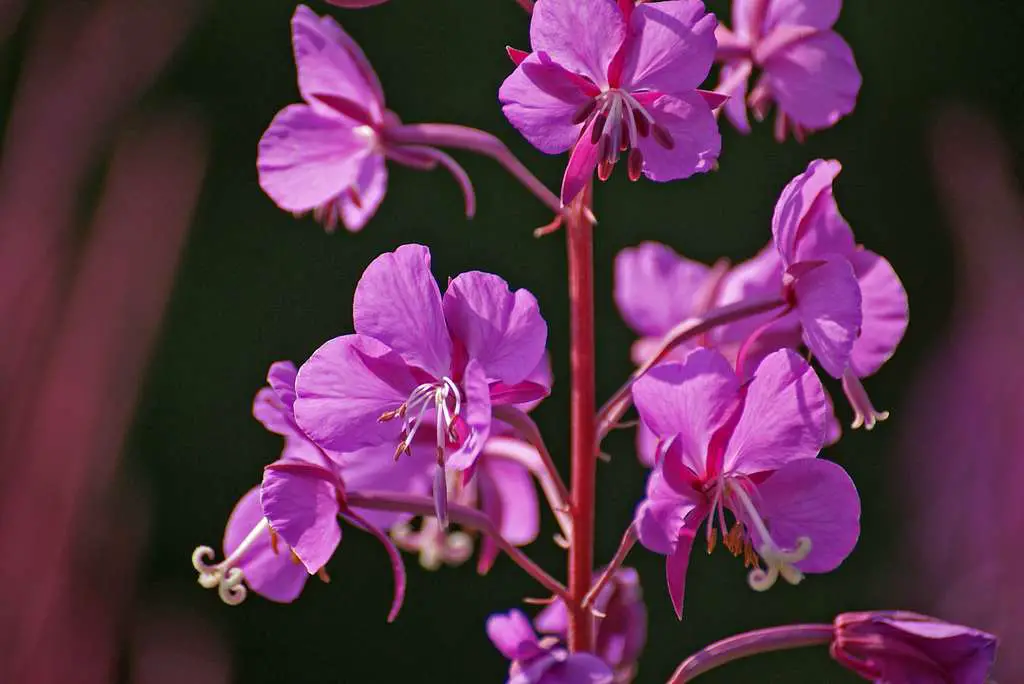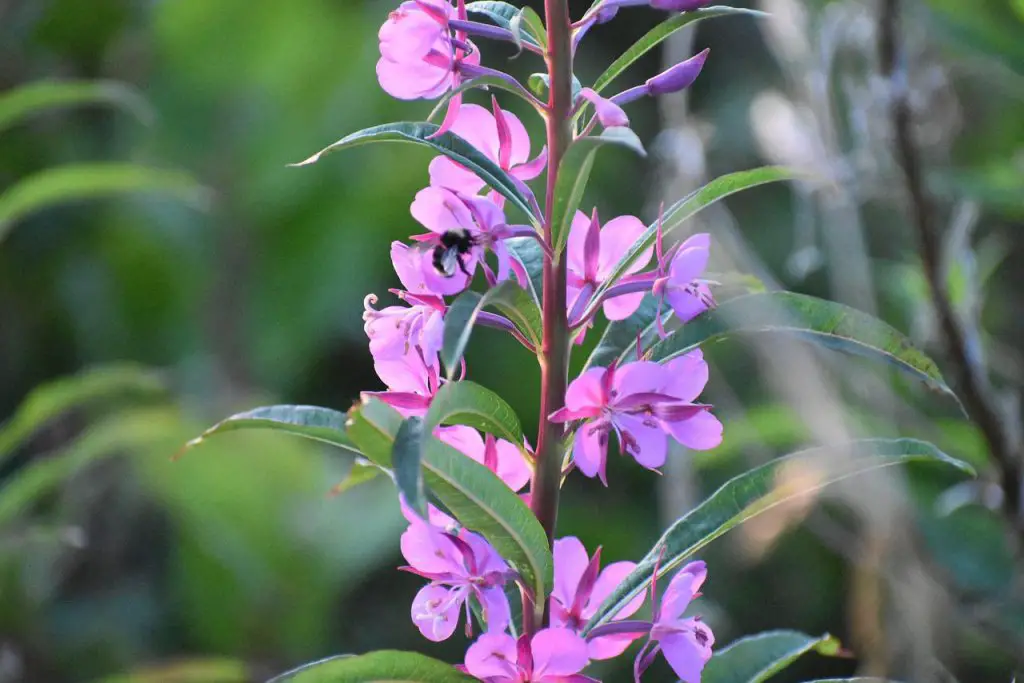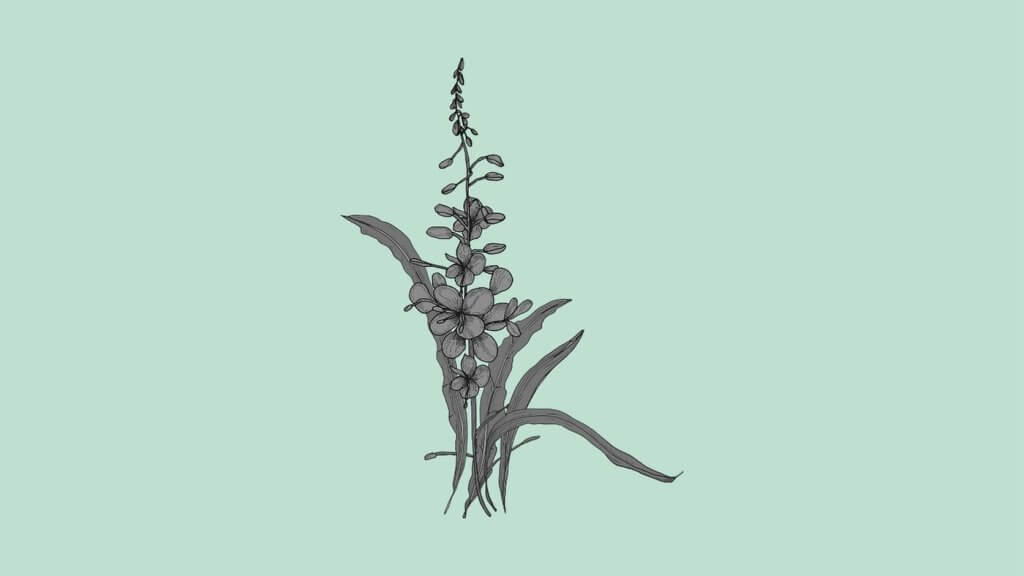Fireweed is an edible native plant with both culinary and medicinal uses that can be seen all over the temperate northern hemisphere, including specific areas within the boreal forests. It is an important plant for honey producers as it attracts bees and hummingbirds as well.
Fireweed is an herbaceous perennial and is often referred to as willowherb because its leaves resemble willows. It appears in other common names for Epilobium angustifolium, such as:
- great willowherb
- flowering willow
- rosebay willow-herb
An unforgettable, tall, majestic flora, fireweed is admired for its magenta-colored blooms cascading across hills, meadows, roadsides, clearings, and forest edges.
As a robust and hardy plant that flourishes in poor soil conditions, fireweed is nature’s symbol of new life.
What Are You Foraging For Right Now?
We're thrilled to hear your ideas. What would you like to submit today? Feel free to share your thoughts and experiences with us.
Woodlands that have been ravaged by forest fire come back to life with this resilient plant, which is why it is called fireweed. This beautiful plant is a member of the Evening Primrose family (Onagraceae).
Fireweed (scientific names and synonyms: Chamerion angustifolium, Chamaenerion angustifolium or Epilobium angustifolium) is a tall showy wildflower that grows from sea level to the subalpine zone.
This species grows so abundant in some places that it carpets entire meadows with its brilliant pink flowers.
What is fireweed used for?
The parts of the plant that grow above ground can be used to make medicine.
People use fireweed for:
- migraine
- stomach ulcers
- wound healing
- enlarged prostate (benign prostatic hyperplasia or BPH)
- the common cold
Is fireweed good to eat?
The fireweed plant is quite remarkable and it is not just because of its striking beauty. Unlike other flowers, all parts of the fireweed are considered edible.
The buds and flowers make for a beautiful garnish and can also be used to make fireweed jelly, which is delicious. The young leaves are often used raw in salads or can be sautéed with other greens in a stir fry.
Additionally, fireweed shoots are great in a salad without blanching; chop them up and toss them in alongside your favorite ingredients.
The shoots also take heat well and can be sautéd in olive oil. Just sprinkle them with some sea salt and a splash of balsamic vinegar before serving.
Where does fireweed grow in the US
From Labrador to Alaska, fireweed is widespread in North America (the northern US and Canada).
In America its distribution extends south along the eastern mountain chain into N. Carolina and in the west down the Cordilleran range into California and New Mexico.
Prominent in the pacific northwest all the way from California through Oregon and up to Alaska, the vibrant purple flowers grow along forest streams and in open meadows, and even along the roadside.
While beautiful, these plants also have strong medicinal properties that can be extracted when making fireweed tea.
If trying to grow fireweed at home, it grows in moist, well-drained soil and establishes best if you add fertilizer. Fireweeds need full sun, but they will tolerate some shade if you don‘t have a sunny spot for them.
And remember, fireweed thrives outside because they rely on bees as pollinators.
How to identify fireweed in nature
Fireweeds grow in little colonies, so you should have no problem spotting a patch of new shoots.
You will likely see patches of them turning up like spring crocuses and you can identify the early fireweed shoots just by looking for their slender reddish colored stalks that are roughly 6” tall and have pointy long leaves.
Fireweeds have a distinctive beautiful pink to purple colored four-petaled flowers that grow in a spike shape. They will be found in pockets of sunlight all over the Northwest.
- Fireweed flowers:
have a bright pink/purple color - work their way up the stalk starting in mid-summer
- reach the top of the stalk in early autumn, usually right before the weather turns truly cold
- have four bright pink petals, with a dark pink sepal in between each one
The inflorescence is a terminal raceme of many flowers. Individual petals are:
- rose to purple in color
- the 4 petals measure from 8-20 mm long
- the 4 sepals are narrowly lanceolate and about 25 percent shorter than the petals
- the stamens are slightly shorter than or nearly equal in length to the stigma, which is cleft into 4 long lobes
- the white filaments terminate in large red anthers
The leaves are:
- alternate
- narrowly lanceolate
- they measure up to 15cm in length
- have a white central vein on most leaves as well


How to Harvest fireweed plant
As a general rule, if there’s some red tinge to the plant and the leaves are still rather close to the stalk, then you have found yourself a usable shoot.
New fireweed shoots have a striking visual resemblance to that of asparagus and a subtle similarity in taste, with their mild tannic flavor.
You can prepare and serve young fireweed shoots just as you would young spring asparagus.
Early shoots can be eaten raw or lightly cooked; just harvest when the leaves are still close to the stem and pointing upward. Then, snap off at the base.
Much like spinach, young leaves can be pinched off and eaten.
Can you use fireweed flowers for tea?
Unlike other herbal teas, fireweed tea does not consist of dried leaves in hot water; the leaves are actually fermented, much like the leaves used in black tea. The result is a tea that tastes very similar to black tea, only without caffeine.
Is Fireweed tea good for you?
Therapeutic properties of Epilobium extracts have been described in various pharmacological studies.
Traditional uses of fireweed include a tea or an infusion, which has been reported as a treatment for:
- migraine headaches
- insomnia
- anemia
- delirium tremens
- infections
- colds
How do you cook with fireweed?
As is true for many edible plants, fireweed’s flavor gets stronger and its leaves become tougher later in the season, so spring is the best time to harvest the leaves and eat them.
After the fireweed starts to bloom, the blossoms can be harvested. When fresh, the bright pink flowers are fairly mild in flavor and add a pop of color to any dish. Look for young, undamaged blossoms, as the older blossoms tend to be more bitter.
In addition to using it raw in a salad, fireweed can be cooked as a vegetable. When boiled, the plant parts make a wholesome tasty vegetable and, as an added benefit, are a great source of vitamins A and C.
It is important to remember only to use the leaves in dishes when they are young.
Now that you know what to look for this spring, the next time you see a carpet of fireweed alongside the road, stop and gather them for a fun culinary experiment.
Ana has always been interested in all things nature and flora. With her expertise in home gardening and interest in foraging, she has been spending her weekends and free time looking for edible native plants, flowers, and fungi. One of her many hobbies includes testing new savory and sweet recipes, juices or teas made from freshly picked plants, wild fruits, or mushrooms.

